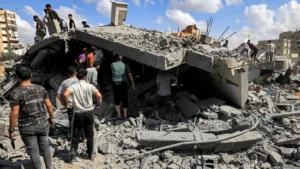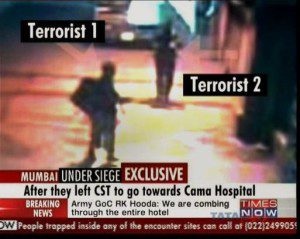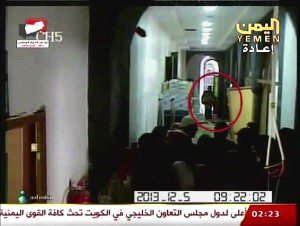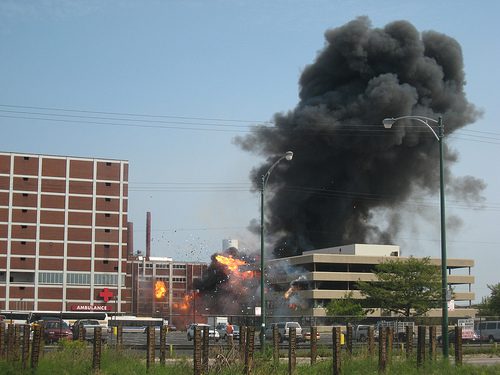 This post was originally published in 2014 and given the outrageous bombing of the Gaza Hospital yesterday that reportedly killed over 500 people, we feel it is relevant to post thoughts on previous International terrorist attacks on hospitals with links to extremist Islamic Militants regarding Domestic and International Healthcare facilities.
This post was originally published in 2014 and given the outrageous bombing of the Gaza Hospital yesterday that reportedly killed over 500 people, we feel it is relevant to post thoughts on previous International terrorist attacks on hospitals with links to extremist Islamic Militants regarding Domestic and International Healthcare facilities.
Update: 23-10/18 Domestic Focus: Originally published in our book “Unready: To err is human – The Other Neglected Side of Hospital Safety and Security†July 2010 and as relevant four years later as it was on day one.
Due to length, we have broken this into two posts, This is the second. For context, it should be noted that this was written during the painful birth of the Department of Homeland Security. In retrospect, combining Public Health and the Non-Federal Healthcare Sector deserves questioning, especially regarding the All Hazards Security posture.
Myth: Hospital Stakeholders are Safe and Secure in their Hospitals.
Reality: Hospitals are very dangerous places for all employees, in general, and women in particular. The risk of being in an unhealthy environment does not stop with exposure to various diseases. Female healthcare employees are among the most physically assaulted workers in the American workforce.
Update: 23-10/18 International Focus: Now we will take a look at a new source of human threats to hospitals with which they have limited experience, “The changing face of terrorism and terrorist actors.â€
 Along with the anti-counter-terrorism community, many of us were surprised by the active participation of physicians as suicide bombers. Physicians have long held high-ranking leadership roles in various terrorist organizations and have been instrumental in recruiting and sending “foot soldiers out to blow themselves up.†Osama bin Laden’s second in command, Dr. al-Zawahiri, is a pediatrician.
Along with the anti-counter-terrorism community, many of us were surprised by the active participation of physicians as suicide bombers. Physicians have long held high-ranking leadership roles in various terrorist organizations and have been instrumental in recruiting and sending “foot soldiers out to blow themselves up.†Osama bin Laden’s second in command, Dr. al-Zawahiri, is a pediatrician.
Events involving physicians as suicide bombers pose a new set of concerns for the international healthcare industry and others. The Camp Chapman Suicide bombing on a group of CIA operatives in Afghanistan was carried out by a Jordanian physician. The Cama Hospital attack by Pakistani extremists demonstrates the terror effect on civilians of assaulting hospitals. Let’s not forget the Fort Hood attack by Islamic Extremist Nidal Hasan.
Shortly after the United Kingdom physician bomber event, the international healthcare and national security organizations engaged in a “deep look-back†and background checks on international medical graduates working abroad. Little open-source information has been released about this for potential terrorists within this population. However, the investigators were stunned by the magnitude of false information that surfaced in the form of forged degrees, undocumented professional experience, and nonexistent references.
According to a recent report from the Department of Homeland Security, there are wholesale abuses in the U.S. visa system. The lack of integrity in our visa system is a danger to all work sites. Setting aside the terrorist threat, the danger to patient populations exposed to practitioners who have misrepresented their professional training and experience should be a concern to all.
 International medical graduates (IMGs) constituted 27% of the U.S. physician workforce in 2006. Experts tell us that the domestic production of physicians and other healthcare professionals will not meet the future needs of known growing demands for healthcare. This will lead to increased recruiting of IMGs. The industry is faced with the need to effectively plan for the potential increase in insider threats posed by this reality.
International medical graduates (IMGs) constituted 27% of the U.S. physician workforce in 2006. Experts tell us that the domestic production of physicians and other healthcare professionals will not meet the future needs of known growing demands for healthcare. This will lead to increased recruiting of IMGs. The industry is faced with the need to effectively plan for the potential increase in insider threats posed by this reality.
Experts suggest there may be a shift away from internationally launched terrorist attacks to establishing terrorist groups in the United States. The entry of women seeking equal rights as suicide bombers substantially increases the threat population. Domestic terrorists, anti-groups, animal protection, and anti-abortion pose a particular concern for healthcare organizations.
Increased nuclear and biological research on university campuses and medical centers nationwide has ignited a revival of many “anti†groups. The recent surge in hate groups adds to this mix. In effect, they have the same access to materials to “dirty bombs,†high-yield explosives, and radioactive material as others who would do us harm.
The old excuses that “our hospital will never be subject to a WMD attack†and “we see no real need to prepare for such an event†ring hollow in the face of the changing terrorist threat landscape. Mumbai’s deadly hospital attack was executed by a few young men with limited training and armed with conventional weapons. It does not seem unreasonable that such groups could be put together relatively quickly and attack what they believe is a soft target in the community.
 Since the publication of this story in 2010, hospitals have continued to be targeted by terrorists, the two most recent bloody examples being the suicide truck bomb last week at Kindi Hospital in Syria which collapsed the building, and the suicide bomb and small arms assault by Al Qaeda that left 52 dead and over 200 wounded in Yemen in December 2013.
Since the publication of this story in 2010, hospitals have continued to be targeted by terrorists, the two most recent bloody examples being the suicide truck bomb last week at Kindi Hospital in Syria which collapsed the building, and the suicide bomb and small arms assault by Al Qaeda that left 52 dead and over 200 wounded in Yemen in December 2013.
There was also the Chechen terror attack that brought Russia to its knees we covered in 2007.
There seems to be confusion over who did the Gaza bombing. Both sides will blame the other, and due to the geopolitical situation, it could easily be a third party. Regardless, it underscores the vulnerability of healthcare facilities to terrorist attacks. The risk of more carnage is real and expands with the potential for Hezbullah sleeper cell attacks in the US, Lebanon, and Iran in the Middle East, particularly Israel.






0 Comments